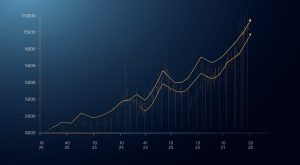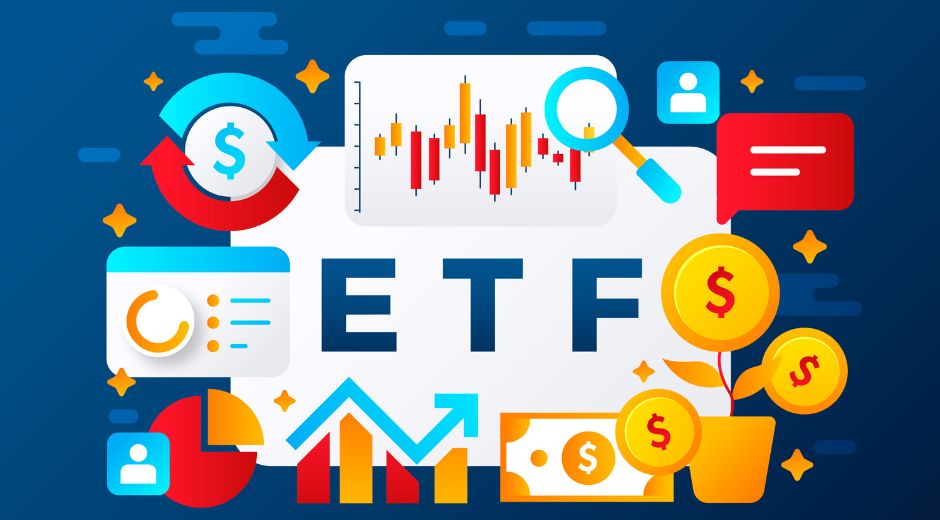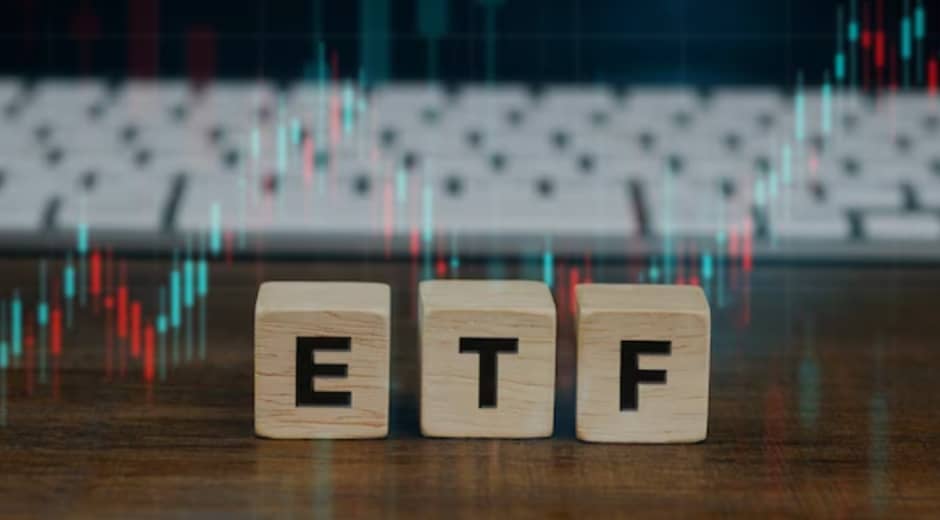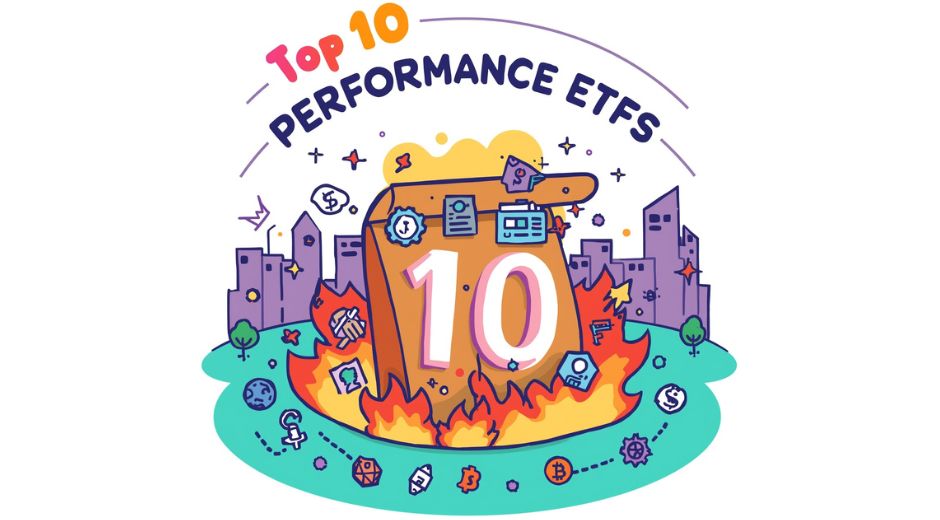The One ETF That Covers Almost Every Corner of the U.S. Stock Market
Investing in the U.S. stock market can feel overwhelming. With thousands of companies spread across multiple sectors, market caps, and growth trajectories, building a diversified portfolio can take extensive research and careful planning. For investors seeking broad exposure without the stress of picking individual stocks, a Stock Market ETF offers a compelling solution.
A Stock Market ETF provides access to a wide array of U.S. equities in a single investment, allowing for diversification, risk management, and ease of trading. In 2025, these ETFs have become increasingly popular for both novice and seasoned investors aiming to capture overall market growth while mitigating volatility.
1. Understanding Stock Market ETFs
A Stock Market ETF is an exchange-traded fund that tracks the performance of a broad segment of the U.S. stock market. Unlike mutual funds, ETFs trade like individual stocks, providing liquidity and flexibility.
Key characteristics include:
Diversification: One ETF can include hundreds or thousands of individual companies.
Low cost: ETFs typically have lower expense ratios than mutual funds.
Transparency: Holdings are usually disclosed daily, so investors know exactly what they own.
Liquidity: ETFs can be bought and sold anytime during market hours.
Essentially, a Stock Market ETF allows you to “own the market” without needing to research and purchase dozens of individual stocks.
2. Why Broad Market Coverage Matters
Diversification is a cornerstone of investment strategy. By spreading capital across sectors, industries, and company sizes, investors reduce the risk associated with any single company’s performance.
A Stock Market ETF that covers almost the entire U.S. market includes:
Large-cap stocks: Established companies like Apple, Microsoft, and Amazon.
Mid-cap stocks: Emerging industry leaders with growth potential.
Small-cap stocks: Innovative companies with high-risk, high-reward profiles.
Multiple sectors: Technology, healthcare, finance, energy, consumer goods, and more.
This breadth ensures that the ETF captures the overall market trends rather than relying on the success of individual sectors or stocks.
3. Key Benefits of Investing in a Broad Stock Market ETF
A. Instant Diversification
By holding a single ETF, investors can achieve diversification that would be costly and time-consuming to replicate through individual stock purchases. This reduces idiosyncratic risk, which is the risk associated with a specific company.
B. Cost Efficiency
Traditional mutual funds often have higher management fees, but broad ETFs like those covering the U.S. stock market maintain very low expense ratios, typically under 0.10%. This keeps more of your investment working for you.
C. Tax Efficiency
ETFs are structured to be more tax-efficient than mutual funds. Inflows and outflows of shares typically do not trigger taxable events, allowing investors to defer capital gains taxes.
D. Flexibility and Liquidity
Because ETFs trade on the stock exchange, they can be bought, sold, or even shorted throughout the trading day. This allows investors to react quickly to market conditions without waiting for end-of-day settlements.
4. Popular Stock Market ETFs Covering the U.S. Market
Several ETFs offer broad exposure to the U.S. market. Some of the most notable include:
Vanguard Total Stock Market ETF (VTI): Tracks virtually the entire U.S. equity market, including large-, mid-, and small-cap stocks.
Schwab U.S. Broad Market ETF (SCHB): Offers a low-cost solution with holdings across more than 2,500 companies.
iShares Core S&P Total U.S. Stock Market ETF (ITOT): Provides exposure to all sectors and capitalization ranges.
These ETFs are ideal for long-term investors seeking consistent growth aligned with overall U.S. market performance.
5. Risk Considerations
What makes these funds “breakout” opportunities isn’t just performance — it’s the alignment of narrative, technicals, and capital flow.
EUAD – Defense renaissance + European re-industrialization.
URA – Nuclear revival and uranium supply squeeze.
ARKW – AI and next-gen internet growth acceleration.
EWY – Asia tech resurgence + export-driven strength.
Together, they represent four different sectors and regions — yet share one theme: capitalizing on global transformation.
6. How to Incorporate a Stock Market ETF into Your Portfolio
A Stock Market ETF can serve multiple roles in a portfolio:
Core Holding: Use it as a foundation around which to build sector-specific or thematic investments.
Retirement Accounts: Ideal for IRAs and 401(k)s due to low fees and long-term growth potential.
Dollar-Cost Averaging: Invest consistently over time to mitigate market timing risks.
Diversification Tool: Combine with international ETFs or bonds for a balanced portfolio.
For most investors, these ETFs provide a solid backbone, allowing for risk-adjusted growth with minimal effort.
7. The Long-Term Performance of Broad Market ETFs
Historically, the U.S. stock market has delivered annual returns averaging 7–10% after inflation. Broad Stock Market ETFs, which track these indices, offer similar performance while reducing the risk of company-specific losses.
By investing consistently and staying patient, investors can benefit from:
Compounded growth: Reinvesting dividends accelerates wealth accumulation.
Market resilience: Broad exposure cushions against volatility in individual stocks.
Ease of management: Minimal monitoring required compared to a portfolio of 20–50 individual equities.
The power of broad exposure lies in capturing the market’s overall upward trajectory, even amid short-term fluctuations.
8. ETFs vs. Mutual Funds: Why ETFs Are Preferred
While mutual funds also provide diversification, ETFs have distinct advantages:
Lower fees: ETFs generally have lower management expenses.
Intraday trading: ETFs can be bought or sold throughout the day.
Tax efficiency: ETF structures minimize capital gains distributions.
Transparency: ETF holdings are disclosed daily.
For investors prioritizing efficiency, flexibility, and cost-effectiveness, broad Stock Market ETFs are often the better choice.
9. How to Evaluate a Stock Market ETF
Before investing, consider the following factors:
Expense Ratio: Lower costs preserve long-term returns.
Holdings: Ensure it truly represents the broad market, not just select sectors.
Liquidity: Higher average daily trading volume reduces bid-ask spreads.
Tracking Error: Minimal deviation from the underlying index indicates efficiency.
Dividend Yield: Some ETFs distribute dividends regularly, providing additional income.
By evaluating these metrics, investors can confidently choose the ETF best suited to their goals.
10. Future Outlook for Broad Stock Market ETFs in 2025
As U.S. markets evolve, broad ETFs remain a cornerstone of diversified investing. Trends shaping their continued relevance include:
Growth of passive investing: ETFs continue to attract investors seeking simplicity and efficiency.
Technological integration: Robo-advisors increasingly recommend broad ETFs as default investment options.
Global interest: International investors look to U.S. ETFs for stable, diversified exposure.
Market accessibility: Fractional shares and low minimum investments make ETFs more accessible than ever.
Broad Stock Market ETFs are positioned to remain a preferred tool for building long-term wealth.
11. Conclusion: Why One ETF Is Enough for Most Investors
For many investors, the right Stock Market ETF can simplify portfolio management while offering broad market exposure. It’s not just a time-saver; it’s a strategy that balances growth potential with risk management.
By investing in a single ETF that covers nearly every corner of the U.S. market, investors gain:
Broad diversification across sectors and company sizes.
Lower fees compared to mutual funds or individual stock portfolios.
Long-term growth aligned with the performance of the overall market.
In 2025, the power of a well-chosen Stock Market ETF lies in its simplicity, efficiency, and ability to deliver consistent, reliable exposure to one of the world’s strongest equity markets.
Internal Link Example:
For more insights into ETFs and smart investing strategies, visit FinanceWorldHub.com.
External References:
Learn more about real estate investing at MetroPropertyHomes.com.
Stay updated on global financial news at NewspapersIO.com.
Education Made Simple

Blue Chip Stocks in 2025: Resilience, Reliability, and Real Growth
Blue Chip Stocks in 2025 remain pillars of market stability and growth, offering investors security, dividends, and consistent long-term value.

Index Funds in 2025: The Timeless Strategy Thriving in a New Financial Era
Index Funds in 2025 remain a cornerstone of smart investing, balancing simplicity, diversification, and steady returns in a volatile market environment.

Natural Gas in 2025: Balancing Energy Demand and Sustainability
Natural Gas in 2025 plays a pivotal role in global energy transition, balancing affordability, sustainability, and reliability amid evolving markets.

Tokenization in 2025: Redefining Ownership in the Digital Economy
Tokenization in 2025 transforms how assets are owned, traded, and valued, bringing transparency and liquidity to global financial systems.

Earnings Season 2025: What Investors Should Watch for in a Shifting Market
Earnings Season 2025 reveals how corporate results are shaping market confidence, guiding investors through volatility and economic transition worldwide.

Dividend ETFs in 2025: Consistent Income for a Volatile Market
Dividend ETFs in 2025 offer stability and passive income amid market uncertainty, helping investors balance risk and long-term returns effectively.

Copper’s Comeback: Why the Red Metal Is Powering the Next Global Boom
Copper’s comeback in 2025 is reshaping global industries as the red metal fuels electric vehicles, green tech, and infrastructure growth worldwide.

Stablecoins in 2025: The Bridge Between Traditional Finance and Digital Trust
Stablecoins in 2025 are redefining trust between crypto and traditional finance, offering stability, faster payments, and global accessibility for investors.

October Stocks: Market Trends and Investment Insights
October Stocks provide a detailed view of market trends, sector performance, and investment opportunities for the month. Explore insights, analysis, and strategies for optimizing portfolios in October.

Cybersecurity ETFs: Safeguarding Portfolios in the Digital Era
Cybersecurity ETFs allow investors to access a diversified portfolio of companies protecting critical digital infrastructure. Learn market trends, growth drivers, and strategies for investing in this essential sector.












